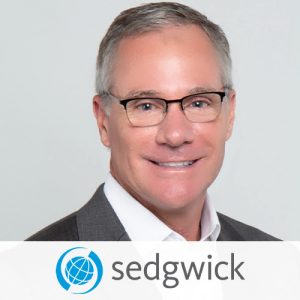
About David:
David Stills serves as senior vice president, carrier, and risk practice with Sedgwick. In this role, David focuses on carrier and client relationships, insurance markets, and risk and legal strategies and practices for Sedgwick’s clients. Additionally, David advises the company and its clients on addressing issues that organizations are facing in their global risk management programs, including issues arising from the pandemic and hard insurance markets.
Prior to joining Sedgwick, he held the position of vice president of global risk management at Walmart Inc. for 18 years. During that time, he led a team of more than 550 risk management and risk finance professionals, with responsibility for Walmart’s Global Risk Management Division, including all lines of insurance, captive insurance company management, U.S.-based casualty claims management, and executive leadership of Walmart Claims Services, Walmart’s wholly-owned third-party administrator.
Q&A:
1. How were you introduced to the Texas elective option industry?
I was first introduced to the Texas option by my now good friend, Bill Minick, who was instrumental in developing the industry to where it is today – creating a great alternative for employers in Texas to care for their injured workers. With Bill’s guidance, my then employer developed a work injury benefit program that allowed for enhanced emphasis on the injured worker.
2. How were you introduced to ARAWC?
ARAWC was formed to help advance a better understanding of the Texas option with both the public and our elected officials. ARAWC is strongly supported by many responsible employers in Texas (and elsewhere) who have experienced firsthand the benefits of the option. I first supported ARAWC as a member, later served as its chairman, and currently serve on the ARAWC advisory board.
3. Can you tell us about your company?
Sedgwick is a leading global provider of technology-enabled risk, benefits, and integrated business solutions. Sedgwick provides a broad range of resources tailored to our clients’ specific needs in casualty, property, marine, benefits, brand protection, and other lines. At Sedgwick, caring counts; through the dedication and expertise of more than 30,000 colleagues across 80 countries. The company takes care of people and organizations by mitigating and reducing risks and losses, promoting health and productivity, protecting brand reputations, and containing costs that can impact performance.
4. What are the benefits of this alternative, elective option program, and how does it align with Sedgwick’s claim practices?
At Sedgwick, taking care of people is at the heart of everything we do – ensuring our client’s injured workers, regardless of program structure, attain the best possible outcome regarding their work injuries. Similarly, a responsibly created elective option benefit plan promotes advocacy for injured workers, ensures appropriate and timely medical care, and advances quality outcomes.
5. What is the value of the program within workers’ compensation systems and how is it managed?
Workers’ compensation is comprised of multiple state systems, each with its own unique set of rules and regulations that are in constant flux. In carrying out their duties, the state workers’ compensation regulatory stakeholders undoubtedly strive to ensure the needs and expectations of the injured workers and companies – whose interest workers’ compensation was originally designed to serve – are continuing to be met.
While currently limited in jurisdictional reach, the elective option takes some of the most critical focuses of the state systems and places them in the hands of the employer to administer – but without the direct oversight of the state. Well-intentioned employers – whether it’s within the confines of a workers’ compensation system or an elective option program – will ensure that their claims philosophy and practices place the care of injured workers as the priority. Much like competition in the free market, the availability of the elective option gives employers a choice and has the (perhaps intended) consequence of helping keep all stakeholders focused on what is important.
